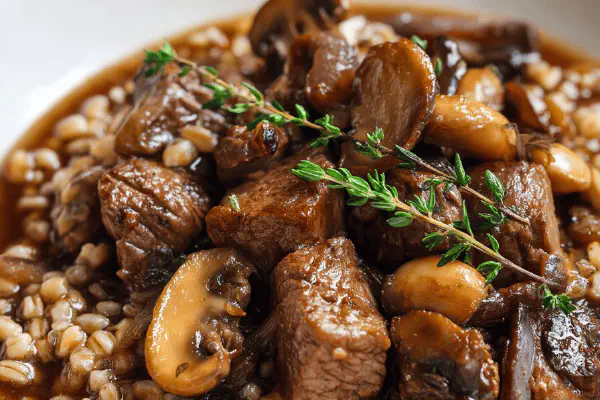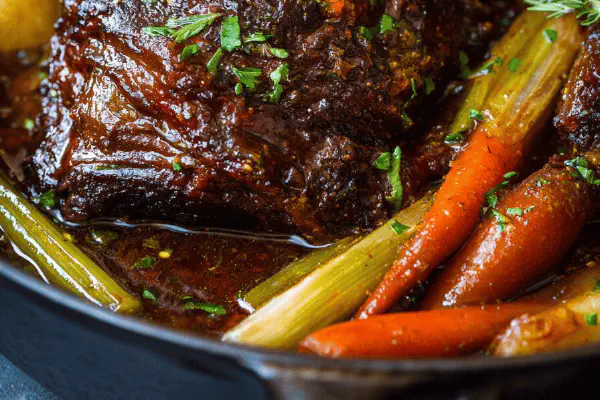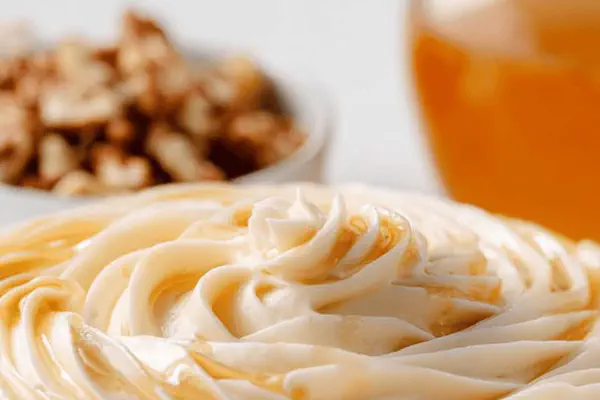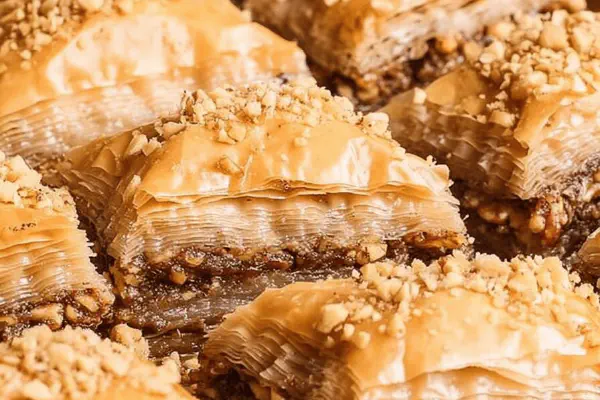Creamy Citrus Rice Pudding
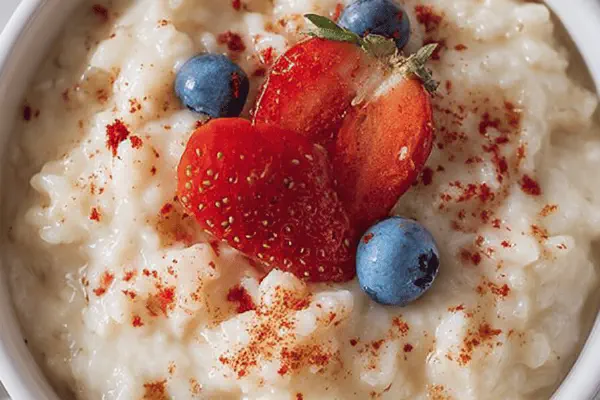
By Emma
Certified Culinary Professional
Ingredients
- 4 cups whole milk
- 1/4 cup granulated sugar
- 3 tablespoons honey
- 1/4 teaspoon fine sea salt
- 1 teaspoon finely grated lemon zest
- 1 teaspoon vanilla extract
- 3/4 cup short-grain rice, rinsed
- 3 tablespoons unsalted butter, cold, cubed
- 1 large egg yolk
About the ingredients
Method
- Rinse the rice well under cold running water until water runs clear, removing excess starch. Set aside.
- Pour milk, sugar, honey, salt, lemon zest, and vanilla into a wide-bottom non-stick pot. Bring over medium heat. Watch for foam forming on surface signaling it's nearly hot enough.
- Once milk froths with tiny bubbles, gently add the drained rice. Stir constantly with wooden spoon to prevent sticking or scorching. Reduce heat to low immediately — should barely simmer, not bubble.
- Cook slowly 25–30 minutes, stirring frequently so grains soften without sticking to the bottom. Rice swells, liquid thickens, aroma turns creamy with citrus brightness.
- Turn off heat. Drop in cold cubes of butter one at a time, folding gently until butter has melted completely — adds shine and richness.
- Temper egg yolk by whisking a few spoonfuls of hot pudding into it, then slowly stir yolk back into pot off heat. This prevents scrambling and thickens pudding into a pale yellow cream.
- Transfer to shallow container. Cover tightly with plastic wrap pressed on surface to avoid skin forming. Cool to room temp, then chill for 20–30 minutes before serving.
- For service, spoon onto plates and add berry compote or tangy jam. Remnants reheat gently on stovetop adding splash of milk if needed to loosen.
Cooking tips
Chef's notes
- 💡 Watch milk when heating--foam and tiny bubbles signal near simmer. Not full boil or scorch happens fast. Shift heat immediately to low once adding rice. Texture starts changing soft then creamy. Stir often but not nonstop. Let stubborn bits loosen without burning bottom.
- 💡 Cold butter cubes fold in off heat. Melts slowly, adds depth and gloss without breaking sauce. Adding melted butter or too hot kills silkiness. Cubes keep texture intact, richness balanced. Helps pudding keep structure when cooled, no greasy slick.
- 💡 Egg yolk tempering crucial to avoid scrambled clumps. Whisk hot pudding into yolk slowly, stir well then combine off heat. Thickens but keeps silky smooth. Skip this step and get lumpy textures, ruined mouthfeel. Slow, steady blending is key here.
- 💡 Lemon zest chosen over orange for sharper brightness cutting richness. Use finely grated fresh zest only. Dry zest or larger bits give bitterness or dullness. Zest aroma changes as pudding cooks, mellowing but sharp note stays. Balances honey sweetness well.
- 💡 Chilling sets pudding into spoonable creamy firmness. Plastic wrap pressed on surface avoids skin film. Cool to room temperature first, then chill minimum 20 minutes. Freezing is no-go here--texture breaks down, watery separates. Warm slightly before serving if too stiff.
Common questions
Can I use brown sugar instead of granulated?
Yes but flavor shifts nutty deeper. Color darkens pudding. Texture barely changed but monitor sweetness. Honey usually dulls sharp edges. Brown sugar adds warmth but less brightness. Try half brown, half sugar for balance.
What if pudding sticks to pot?
Happens if heat too high or stirring skipped. Lower heat immediately. Wooden spoon recommended. Scrape bottom gently but don’t mix aggressively. Rinsed rice reduces surface starch, stops glue. If stuck badly, soak pot while cooling to ease cleanup.
How to store leftovers?
Keep covered in fridge wrapped tight or sealed container. Lasts 2-3 days max. Can reheat gently with splash milk to loosen. Avoid microwave blasts that toughen texture. Don’t freeze or pudding separates water and grain hardens. Better cold than reheated harshly.
Can I substitute coconut milk?
Yes but flavor richer, nuttier, less creamy dairy silk. Texture changes, pudding thickens differently. Adds tropical notes but lemon zest sharpness stays. Sweeten carefully; honey or maple may also be used. Cooling times might vary due to fat content.
